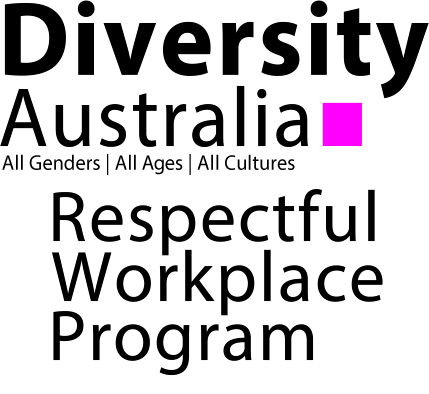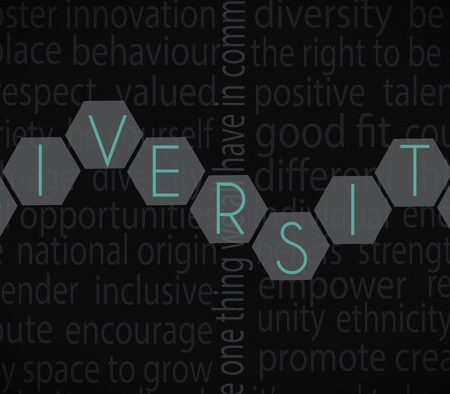Description
Diversity Australia’s Respectful Workplace ( Sexual Harassment, Bullying and Discrimination) Program is a valuable tool in helping to make your workplace free of incidents involving sexual harassment and bullying. Despite strong government attention and legislative focus, sexual harassment still remains the most prevalent form of harassment in the workplace.
This Program is suitable for staff at all levels and is relevant for all workplaces, aiming to educate generally about the negative impacts of harassment and also to challenge widely held misconceptions about what sexual harassment is.
Workplace education on the issues and challenges surrounding this complex topic is the most effective method of encouraging compliance with legislation and helping to avoid problems.
For employers an essential skill in the provision of training and awareness around sexual harassment, bullying, culturally appropriate services, gender and cultural awareness entails an understanding of how a person’s culture may inform their values, behaviour, beliefs and basic assumptions against the laws that prohibit these actions.
PROGRAM OUTLINE
Learning Objectives:
Upon successful completion of the program participants will be able to:
- Identify acceptable and unacceptable behaviour in the workplace
- Explain the effects of unacceptable behaviour, and
- Outline the requirements of the relevant legislation
What does the term “behaviours” refer to?
‘Behaviour’ is an umbrella term for a range of actions and communications, including:
- Verbal (such as derogatory comments and jokes)
- Actions (such as gestures, threats or physical violence)
- Decisions (such as those made regarding promotions)
- Directions (such as to perform tasks outside of a person’s job description)
- Publications (such as internal mail, email or notice boards), and
- Social media (such as Facebook and Twitter).
What is Workplace Bullying?
Bullying is repeated, unreasonable behaviour towards a worker or group of workers and can create a risk to health and safety. Repeated means the behaviour is persistent and occurs over time.
Unreasonable behaviour means a reasonable person would see the behaviour as victimising, humiliating, undermining or threatening. The intention of the behaviour is irrelevant!
Examples of direct bullying include:
- Abusive, insulting or offensive language
- Spreading misinformation or rumours
- Language or behaviour that frightens, humiliates, belittles or degrades including yelling or screaming.
- Teasing or regularly making someone the brunt of pranks or practical jokes, and
- Interfering with a person’s property either personal or work equipment or harmful or offensive initiation practices
Examples of indirect bullying include:
- Unreasonably overloading a person with work or not providing enough work.
- Deliberately excluding a person from normal work activities
- Withholding information that is vital for effective work performance
- Deliberately changing work arrangements such as rosters and leave to inconvenience a particular person or group of people, and
- Unfair treatment in relation to accessing workplace entitlements such as leave and training
What is Harassment?
Harassment involves offending, humiliating or intimidating behaviour directed toward a person on the basis of a particular personal characteristic, such as a person’s gender, sexual orientation, race, skin colour or ethnic origin.
What is Sexual Harassment?
Sexual harassment is perhaps the most common form of workplace harassment and includes any unwelcome conduct of a sexual nature, which could be expected to make a person feel offended, humiliated or intimidated.
It can be physical, verbal or written and a single incident is enough, it doesn’t have to be repeated!
Sexual harassment can create a culture that isn’t embracing or welcoming of women and therefore have a detrimental effect on gender diversity
Examples of Sexual Harassment include:
- Insensitive jokes and pranks
- Lewd comments about appearance
- Sexually suggestive behaviour, such as leering or staring
- Unnecessary body contact
- Displays of sexually offensive material
- Sexual explicit emails, text messages or posts on social networking sites
- Requests for sexual favours
- Repeated requests to go out
- Speculation about a person’s private life and sexual activities
- Threatened or actual sexual violence, and
- Threat of dismissal, loss of promotion and so on, for refusal of sexual favours
What is Discrimination?
Discrimination is defined as the unjust or prejudicial treatment of different categories of people, on the ground of a particular personal characteristic, including:
- Race or colour
- Sex or sexual preference
- Age
- Physical or mental disability
- Marital status
- Family or carer’s responsibilities
- Pregnancy
- Religion
- Political opinion
- National extraction or
- Social origin.
Direct Discrimination happens when a person, or a group of people, are treated less favourably than another person or group because of their background or certain personal characteristics, such as:
- Not hiring a person because of their age, or
- Not promoting a woman because she is pregnant.
Indirect Discrimination happens when there is an unreasonable rule or policy that is the same for everyone but has an unfair effect on people who share a particular attribute, such as indirect carer or parental discrimination form enforcing a policy that says all managerial staff must work full-time, as this might disadvantage those who need to work part-time or flexible hours to fulfil parental commitments.
Effects of Unacceptable Behaviours
Bullying, harassment and discrimination can cause a risk to health and safety as they may affect the mental and physical health of the victims, and even witnesses of the offending behaviour. For an individual or group of individuals, detrimental effects can include:
- Reduced work performance
- Anxiety, depression or physical illness as a result of stress
- Isolation from colleagues, and
- Loss of self-esteem, particularly belief in their ability at work
As well as victims and witnesses of these behaviours, bullying, harassment and discrimination in the workplace can have a detrimental effect on the business as a whole, such as:
- High staff turnover
- Loss of morale and motivation
- Increased absenteeism
- Decrease in productivity, and
- Adverse reputational and brand damage
It is the responsibility of all managers/supervisors to ensure that everybody in the workplace is free from sexual harassment. Every manager, supervisor and employee has a significant role in ensuring the achievement of workplaces that are free of all forms of sexual harassment.
This Sexual Harassment Training Program component is intended to provide the additional knowledge required to understand what sexual harassment is, and how to deal with it if it occurs. This program will look at the:
- Definition of the term ‘sexual harassment’
- The legal framework for sexual harassment across the workplace
- Individuals’ rights and responsibilities at work and beyond
- The importance of workplace policies, procedures and tools
- Quid pro quo sexual harassment
- Hostile working environments and how the liabilities mount up
- Single incidents can also constitute harassment
- Harassment can occur even without intent
- Responsibilities outside of the workplace
- Conventions on ‘acceptable’ behaviour
- Responding to an incident of sexual harassment
- The role and responsibilities of management
- Anti-discrimination laws
- Proactive prevention of sexual harassment
An additional part of this program is looking at Cultural Awareness and recognising that we are all shaped by our cultural backgrounds which influences how we interpret the world around us, perceive ourselves and relate to other people and often what is offensive and what is not. It’s important to understand that you don’t need to be an expert in every culture or have all the answers to be culturally aware, rather that cultural awareness helps you to explore cultural issues with your staff and customers more sensitively.




